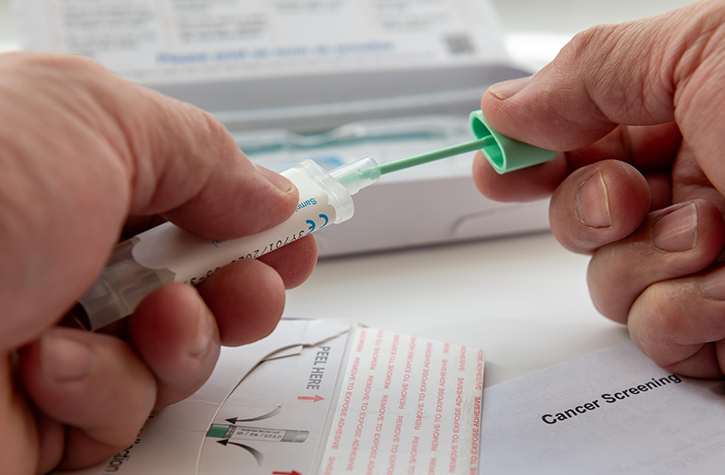MedPage Today — August 21, 2017
A new risk-stratification tool identified patients with type 2 diabetes (T2D) who were more likely to have severe hypoglycemic episodes that brought them to the hospital or emergency room, researchers said.
The tool classified patients as high, intermediate, or low risk based on six variables that were reported online in JAMA Internal Medicine.
“Healthcare systems currently lack an evidence-based method for efficiently and systematically identifying patients with T2D at risk of hypoglycemia-related emergency department or hospital use,” wrote the researchers, led by Andrew J. Karter, PhD, a research scientist at Kaiser Permanente Northern California’s Division of Research and associate director of the National Institute of Diabetes and Digestive and Kidney Diseases Health Delivery Systems Center for Diabetes Translational Research. “This tool uses electronic medical record data only and requires no patient contact; it offers an efficient, low-cost approach for identifying patients for targeted interventions to reduce their risk of hypoglycemia.”
Hypoglycemia is one of the most frequent adverse events in patients with T2D and is more common than acute hyperglycemic emergencies, the team added. One in four emergency hospitalizations for adverse drug events is related to hypoglycemia, and these rates are higher in older patients.
The tool is available and useful to clinicians as well as healthcare delivery systems, Karter explained via email to MedPage Today. “The figure published within our paper is essentially a ‘tool on a page’ and includes all the details needed to risk stratify a patient or a population.”
The researchers used a prospective cohort study design to develop the tool, which assesses the 12-month risk for hypoglycemia-related emergency room or hospital visits. Electronic medical records data were examined from 206,435 patients with T2D in the Kaiser Permanente Northern California health system, and patients were randomly split into an 80% derivation sample for tool development (n=165,148) and a 20% internal validation sample (n= 41,287).
The researchers used a literature search to identify 156 clinical, demographic, and behavioral risk factors for hypoglycemia in T2D, excluding variables that were expensive or impractical to collect, were ambiguous, or were not typically available in electronic medical records. Univariate logistic regression models were used to generate odds ratios for each of these variables.
The final analysis identified six risk factors that were used in the tool: number of prior episodes of hypoglycemia-related utilization, insulin use, sulfonylurea use, prior year emergency department use, chronic kidney disease stage, and age.
The tool classifies a patient’s 12-month risk as high (> 5%), intermediate (1%-5%), or low (<1%). In the Kaiser Permanente cohort, 2% of patients were in the high-risk category, 10.7% were intermediate risk, and 87.3% were low risk. When the investigators looked at actual hospital and emergency room visits for hypoglycemia over 12 months, the rates were 6.7% in the high-risk group, 1.4% in the intermediate-risk group, and 0.2% in the low-risk group.
Karter’s group conducted external validations in two independent samples of patients with T2D from the Veterans Administration Diabetes Epidemiology Cohort (n = 1,335,966) and from the Group Health Cooperative (n=14,972). There was good discrimination in the Veterans Administration sample (C statistic=0.81) and in the Group Health sample (C statistic=0.79).
The tool’s logic can be programmed into a health system’s electronic medical records and automatically risk stratify patients based on their data, Karter et al said: “This tool is intended to offer a practical method to risk stratify patients for population management. For example, intensive interventions aimed at reducing hypoglycemia risk could be targeted at the minority of patients with T2D in the high-risk category.”
Such interventions could include de-intensifying or simplifying medication regimens, addressing impaired hypoglycemic awareness, prescribing glucagon kits or continuous glucose monitors, making referrals to clinical pharmacists or nurse care managers, providing additional diabetes education, and regularly asking about hypoglycemia events occurring outside the medical setting.
In addition, clinicians could have discussions with patients to address potential contributors to hypoglycemia, including behavioral factors such as meal skipping, psychosocial factors such as food insufficiency, or socioeconomic factors such as deprivation.
A potential limitation of the tool is that it was only designed to predict risk for hypoglycemic episodes that lead to hospital visits, whereas the vast majority of these episodes (approximately 95%), do not result in hospital visits but are instead treated by friends or family, the researchers said.
“However, we demonstrated a strong and significant association between the tool’s stratification of the risk of hypoglycemia-related utilization and a patient’s self-reported severe hypoglycemia events. Therefore, we believe that preventive interventions targeting patients identified as high risk by this tool may reduce the rate of severe hypoglycemic events that do not result in utilization or clinical recognition.”
The Food and Drug Administration funded development of the tool under the agency’s Safe Use Initiative, Karter’s group said in a statement. The initiative is a collaborative effort to reduce adverse events related to medication use. The results are being disseminated with help from the Centers for Medicare & Medicaid Services (CMS). Several public and private healthcare systems and organizations — including CMS, the Mayo Clinic, and Kaiser Permanente — are examining how they can use the tool to increase awareness of hypoglycemia and help patients avoid dangerous episodes, the researchers said.
This article originally appeared in MedPage Today on August 21, 2017.






